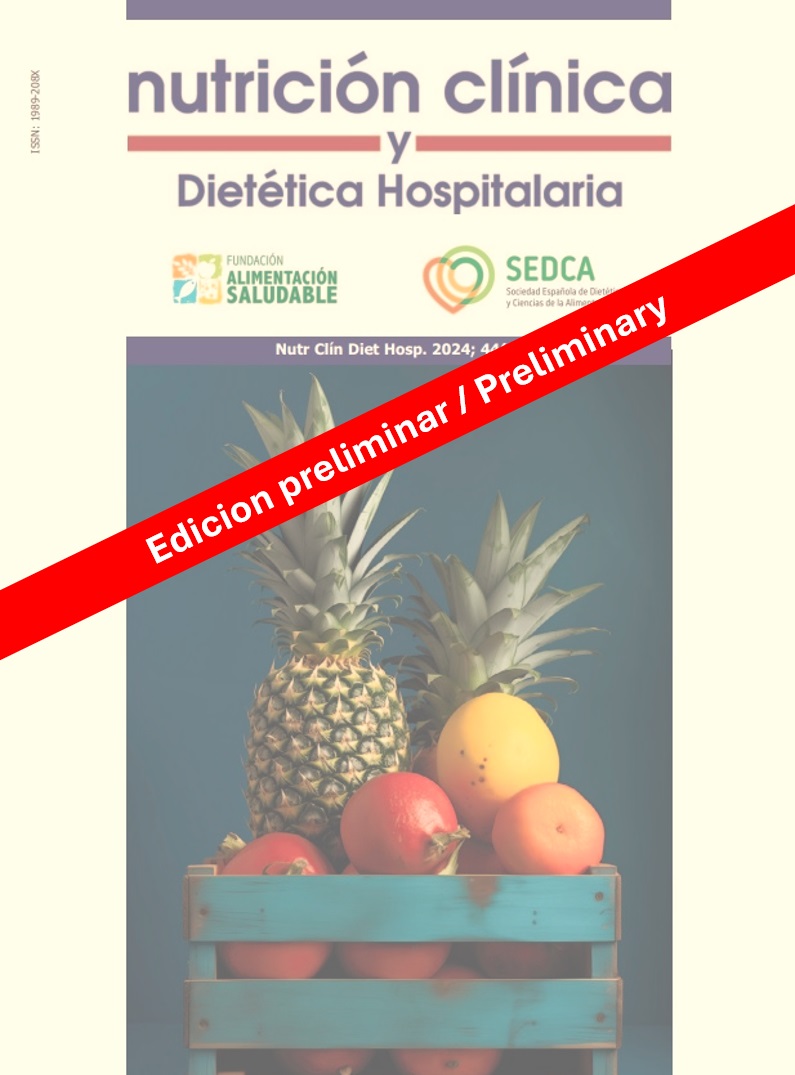Inequalities in post-COVID-19 food security: A comparative analysis of Chile, Colombia, and Mexico.
DOI:
https://doi.org/10.12873/Keywords:
Food Security, Chile, Colombia, Mexico, COVID-19Abstract
ABSTRACT
Introduction: Food security is a key determinant of a healthy life. However, in the aftermath of the COVID-19 pandemic, it has been compromised due to the negative impacts on economic and healthcare systems across Latin America. The aim of this study was to compare food security levels among adults residing in Chile, Colombia, and Mexico during the post-pandemic period.
Methodology: This was a cross-sectional, quantitative, descriptive, and comparative study. A total of 790 adults participated, selected through convenience sampling combined with the snowball technique. Food security was assessed using the Latin American and Caribbean Food Security Scale. Statistical analyses were performed using IBM SPSS software, version 24.
Results: Chile showed the highest levels of food security, followed by Mexico. In contrast, Colombia reported the highest prevalence of food insecurity, particularly in its severe form. Moderate and severe food insecurity was less frequent in Chile. Significant differences were found between countries, even after controlling for income level and educational attainment.
Discussion: There are significant differences in food security between Chile, Colombia, and Mexico. Chile is better positioned for government agencies to respond to the health crisis, while Colombia and Mexico face higher levels of food insecurity. This government response reflects the differences in food security levels between the countries.
Conclusions: The findings reveal substantial disparities in food security among the countries studied. These results underscore the urgent need for public policies aimed at improving access to food and ensuring stability, especially in vulnerable populations across the region.
References
1. Escala Latinoamericana y Caribeña de Seguridad Alimentaria (ELCSA) - Manual de uso y aplicación.
2. Organization F and A. The State of Food Security and Nutrition in the World 2019: Safeguarding Against Economic Slowdowns and Downturns. 1st ed. Bloomfield: United Nations Publications; 2019. 1 p. (The State of Food Security and Nutrition in the World Series).
3. Albala C, Sandobal M, Moya M, Marquez C Estudio de seguridad alimentaria y nutricional y factores asociados en personas mayores. Santiago de Chile: Instituto de Tecnología de los alimentos,INTA; 2024. - Buscar con Google.
4. FAO. An Introduction to the Basic Concepts of Food Security [Internet]. Disponible en: https://www.fao.org/4/al936e/al936e00.pdf
5. The State of Food Security and Nutrition in the World 2022 [Internet]. FAO; 2022. Disponible en: http://www.fao.org/documents/card/en/c/cc0639en
6. Djekic I, Nikolić A, Uzunović M, Marijke A, Liu A, Han J, et al. Covid-19 pandemic effects on food safety - Multi-country survey study. Food Control. abril de 2021;122:107800.
7. Rizou M, Galanakis IM, Aldawoud TMS, Galanakis CM. Safety of foods, food supply chain and environment within the COVID-19 pandemic. Trends in Food Science & Technology. agosto de 2020;102:293-9.
8. Seguridad alimentaria en hogares mexicanos [Internet]. Disponible en: https://insp.mx/assets/documents/webinars/2021/CIEE_Seguridad_alimentaria.pdf
9. Inseguridad Alimentaria en Colombia [Internet]. Disponible en: https://www.dane.gov.co/files/investigaciones/notas-estadisticas/NotaEstadistica-FIES-DANE-FAO.pdf
10. Resultados Inseguridad Alimentaria COVID IV [Internet]. Disponible en: https://observatorio.ministeriodesarrollosocial.gob.cl/storage/docs/covid19/Resultados_InseguridadAlimentaria_COVID_IV.pdf
11. Carvajal-Aldaz D, Cucalon G, Ordonez C. Food insecurity as a risk factor for obesity: A review. Front Nutr. 26 de septiembre de 2022;9:1012734.
12. Hernández M E, Pérez S D, Ortiz-Hernández L. Consecuencias alimentarias y nutricionales de la inseguridad alimentaria: la perspectiva de madres solteras. Rev chil nutr. diciembre de 2013;40(4):351-6.
13. Hidru HD, Gebremedhine H, Gebretsadik A, Teame H, Negash H, Mengesha MB. Prevalence of Food Insecurity and Its Associated Factors among Adult People with Human Immunodeficiency Virus in Ethiopia: A Systematic Review and Meta-Analysis. Int J Food Sci. 1 de junio de 2021;2021:7816872.
14. Aljahdali AA, Ludwig-Borycz E, Leung CW. Food insecurity, inflammation, and immune function among older US adults: Findings from the Health and Retirement Study. Brain Behav Immun. julio de 2024;119:28-35.
15. Chai L. Food Insecurity and Health: Marital Status and Gender Variations. Fam Community Health. 1 de diciembre de 2023;46(4):242-9.
16. Johnson TP. Snowball Sampling: Introduction. En: Wiley StatsRef: Statistics Reference Online [Internet]. John Wiley & Sons, Ltd; 2014. Disponible en: https://onlinelibrary.wiley.com/doi/abs/10.1002/9781118445112.stat05720
17. Abramo L, Cecchini S, Ullmann H. Addressing health inequalities in Latin America: the role of social protection. Cien Saude Colet. mayo de 2020;25(5):1587-98.
18. Viana AL d’Avila, Fonseca AMM da, Silva HP da. Proteção social na América Latina e Caribe: mudanças, contradições e limites. Cad Saúde Pública. 2017;33:e00216516.
19. Caro P, Toro Huerta C. Medidas implementadas en Chile para garantizar el acceso a los alimentos durante pandemia COVID-19. Rev chil nutr. diciembre de 2021;48(6):917-23.
20. Lustig N, Pabon VM, Sanz F, Younger SD. The Impact of COVID-19 Lockdowns and Expanded Social Assistance on Inequality, Poverty and Mobility in Argentina, Brazil, Colombia and Mexico. Working Papers [Internet]. agosto de 2020; Disponible en: https://ideas.repec.org//p/inq/inqwps/ecineq2020-558.html
21. Hun N, Urzúa A, Palma N, Chocobar J, Leiva-Gutiérrez J, Hun N, et al. Seguridad alimentaria en escolares chilenos y migrantes durante la pandemia por COVID-19 en Antofagasta, Chile. Revista Española de Nutrición Humana y Dietética. diciembre de 2023;27(4):256-63.
22. Encuesta Nacional de la Situación Nutricional ENSIN 2015. Colombia: Ministerio de Salud y Protección Social - MSPS;2015.
23. Hun Gamboa N, Salazar M, Aliste S, Aguilera C, Cárdenas ME. Food quality in pre-school and school children in Chile during the COVID-19 pandemic. Nutr Hosp 2023
24. Rodríguez-Ramírez S, Gaona-Pineda EB, Martínez-Tapia B, Romero-Martínez M, Mundo-Rosas V, Shamah-Levy T. Inseguridad alimentaria y percepción de cambios en la alimentación en hogares mexicanos durante el confinamiento por la pandemia de Covid-19. Salud Publica Mex. 5 de noviembre de 2021;63(6, Nov-Dic):763-72.
25. Lawrence MA, Baker PI, Pulker CE, Pollard CM. Sustainable, resilient food systems for healthy diets: the transformation agenda. Public Health Nutr. noviembre de 2019;22(16):2916-20.
26. Thompson J, Ndung’u N, Albacete M, Suleri AQ, Zahid J, Aftab R. The Impact of Covid-19 on Livelihoods and Food Security. The Institute of Development Studies and Partner Organisations; 2021 jun.
Downloads
Published
Issue
Section
Categories
License
Copyright (c) 2025 Nutrición Clínica y Dietética Hospitalaria

This work is licensed under a Creative Commons Attribution-NonCommercial-NoDerivatives 4.0 International License.
Los lectores pueden utilizar los textos publicados de acuerdo con la definición BOAI (Budapest Open Access Initiative)



